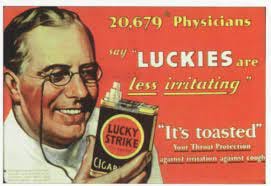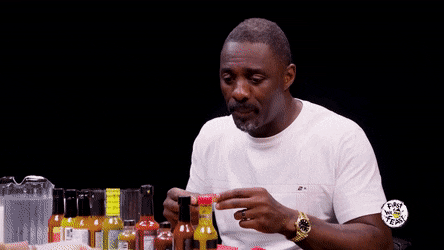Ads Are Simple... Simple is Hard
How customer view advertisements and the challenges brands face with digital ads...
This week’s deep dive into Customer Psychology, subscriber-only articles, delivered every Thursday, highlighting how customer psychology helps business and marketing.
People like ads.
Earlier this year, I was interviewing a slew of customers about something. Social media was part of it. Specifically about ads on social.
No one said anything bad about them. They didn’t gush over the, but some outright stated that they liked seeing the ads.
Well, I guess Instagram knows me pretty well!
All those years of death scrolling paid off for some of these folks. They get to discover new things that they like… that they knew they wouldn’t have randomly found out about had they not been served an ad.
So people seems like them…
But what’s with all the hate that ads get?
Marketers Hate Ads
The thing about ads is that they work, and we don’t know why. As the famous Ogilvy said in his book Confessions of an Advertising Man:
Half the money I spend on advertising is wasted, and the trouble is I don't know which half.
Even though marketers count on ads as a means of customer acquisition, it is still not always clears as to why they work. So there is a built in suspicion.
When someone in marketing is hating on ads, its because theirs are not working, and they don’t know why.
But that same someone will pat themselves on the back when it is working…. because they get it.
It is also common for people in other branches of marketing to harp on ads. They call it interruption marketing and talk about why X marketing is better. But, in that case, they are just trying to sell a service or demand more for their budget.
Not all ads are created equally
I will stick to my original premise that people like ads, but not all people like all ads, especially if the placement is all wrong.
Let’s take Regular TV and Streaming TV as an example
Streaming TV
I absolutely hate when a streaming platform uses ads. When I want to Netflix and chill, I can’t have the Charmin bears show up and ruin the moment
Netflix set the standard a long time ago. Pay for your shows, and we will let you enjoy it in peace.
Hulu, Disney+, Amazon Prime and every other one followed suit.
Then one day I was trying to watch the reboot of Lethal Weapon on my computer. I think it was CBS All Access? Whatever. There were a bunch of ads before and in the middle. I hated it.
Streaming = no commercials… How do you even sleep at night CBS?
Regular TV
Now when it cuts to commercials on regular TV… as if on cue, we all run an in-house errand, or take a bathroom break, or check our phones, or get popcorn.
Or we just sit there and watch all the pharmaceutical commercials and wonder how advertising medicine is even legal.
What’s the difference?
We were trained.
Ads have always been part of TV viewing. There was s never a time when it wasn’t. It is the business model of TV media. We are adjusted to its rhythm.
But streaming?
Streaming is way more like going to the movie theater than watching your regularly scheduled programming. We pay to go to the movies. We make plans with friends around it. We go on dates there. We eat while we watch. It’s a whole thing…
So when you put TV ads into a movie experience, its too much. Give us a few trailers and be done. That’s how the world works.
And here is why this is applicable to ecommerce and digital marketing…
*well this changes things…
I was writing this last night, but didn’t finish editing… and then this morning, I saw this on Twitter….

Not gonna lie… I don’t have a problem with this type of ad on Netflix as long as:
these ads are only at the beginning of a show, and never in the middle.
the production level and connectedness to the show is at this level.
If the show hasn’t started, and I am not engrossed in a show, this is not too bad. I would still rather just pay the premium for no ads, but if someone wanted to pay for a cheaper tier… this keeps things somewhat like trailers in the movie theater.
Now… back to your regularly scheduled programming….
…and here is why this is applicable to ecommerce and digital marketing.
Mediums and Mindset
When we are on a certain medium, we are in a certain mindset, and we have certain expectations.
It is easy to see that when talking about TV and the movie theater, but the same goes when we are online…. its just much harder to see it because we mistake “online” as one medium.
This is where marketers slip up.
Marketers will create campaigns and brand assets to spread its message and attract new customers. That costs a lot of time and money and hard work. So they want to get the word out fast, efficiently, and reap the fruits of their labor.
So often, those digital assets will be resized and formatted to be blasted everywhere: the website, Instagram, TikTok, Facebook, Pinterest, Youtube, Snap.
Locked and loaded!
And then it gets some traction. Works well in some places. Not in others. Such is life… nothing is perfect.
The problem is that we have a different mindset when we are on each of those mentioned. You are…
Shopping on a website…
Developing an anxiety on Instagram…
Learning dance moves on TikTok…
Sharing baby photos on Facebook…
DIY-ing your home on Pinterest…
Down a rabbit hole on Youtube…
And no idea about Snapchat… never downloaded it.
So if you have a different mindset and goal when spending time on each of those platforms… the same message isn’t going to work the same?
Now, to prove my point, notice that I didn’t mention a couple big social channels: Reddit and LinkedIn.
Everyone understands that these 2 platforms are different and used differently. Promoting your brand in a subreddit about your industry is a recipe for disaster, and the only people that have any business being on LinkedIn are businesspeople doing business things.
But the others are kind of lumped together as one package.
This is why a lot of smart marketers find 1 or 2 platform that work well and just stick to those. They can then use their creative juices to meet the customer where they are at and where their head is it…
Why People Don’t Hate Bad Ads?
So I kind of insinuated that most brands/marketers make bad ads. Of course, I am not talking about you… I’m talking about the other guy.
But if we assume there are a lot of the other guys, it would make sense that people would hate ads. If there were so many bad ones… we’d tire of them, no?
Well… luckily, we have banner blindness.
Banner blindness is a phenomenon where visitors to a website consciously or unconsciously ignore banner-like information. A broader term covering all forms of advertising is ad blindness.
Humans are masters at pushing unimportant information to our periphery. So much is going on before our eyes at any given moment, if we processed it all at once… our heads would blow up 🤯.
We are recognize patterns, categorize them as threatening or non-threatening. Subconsciously, we can differentiate between a benign banner ad and a saber-tooth tiger… that is how we got here and continue to thrive.
So most ads are filtered out of our awareness because of the standard placement, format, and structure of digital ads we have come to recognize. And the really bad ones are ignored passively.
Bad ads are just noise. You’d have to be really bad to stand out and get attention…
Looking at you, George Constanza.
I’m Lovin’ It…
This notion of banner blindness lends to the shade marketers throw at ads. They have budgets and things they want to do with it, but don’t know how many of that “mille” goes completely unseen.
Make it Cohesive.
So far everything we’ve established that people like ads but not what makes them effective.
People love to quote Ogilvy about not knowing which half of his ad money was wasted. It makes light of the fact that we often don’t know what is working or not...
But he wrote that shit in 1963.
In 1963, we were trying to get a man on the moon. Now it is 2022, and billionaires are taking joyrides in space… Needless to say, things are different.
How we need to think about ads is also different.
Shopping is more complex these days. People are shopping across multiple mediums throughout their buying process.
It’s not the perfect piece of blatant lies copy on a Lucky Strike ad that gets us. It is more of a combination of factors and brand exposure that gets us to the point of readiness.
What we need is a cohesive strategy.
The modern day shopper interacts with so many brands on a daily basis, it is mostly white noise, but cohesive messaging and branding raises the awareness from the periphery to our attention.
Yes, it works both ways…
We filter out by patterns and things grab our attention by surfacing a pattern.
When a brand successfully distributes its messaging throughout our customer journey, it stands out. It is not a saber-tooth tiger or part of the white noise. It must be OK…
Let it build up…
So if we need to have a cohesive strategy with a cohesive message that can rise to the surface, we need to also understand that things build up before they reach their tipping point.
My first try at Facebook Ads did not get the results I wanted. Things moved slow and so I started prodding and prying, changing things here and there. And, as you know, that is the best way to mess up an ad campaign.
Think of marketing like trying to break Idris Elba…
Have you see the Youtube show Hot Ones?
In case you haven’t, Sean Evan conducts celebrity interviews as they eat ridiculously spicy chicken wings. 10 of them, each with increasingly fiery hot sauce.
It is pretty fun. Few make it to the end.
Oh… marketing… Right, it’s not 1 spicy wing that gets you, its all of that spice that builds up. Eventually you can’t take it anymore.
All of your content, and emails, and photoshoots, and ads will build up until the customer is ready to go through with a purchase.
Just keep pouring on that hot sauce…








